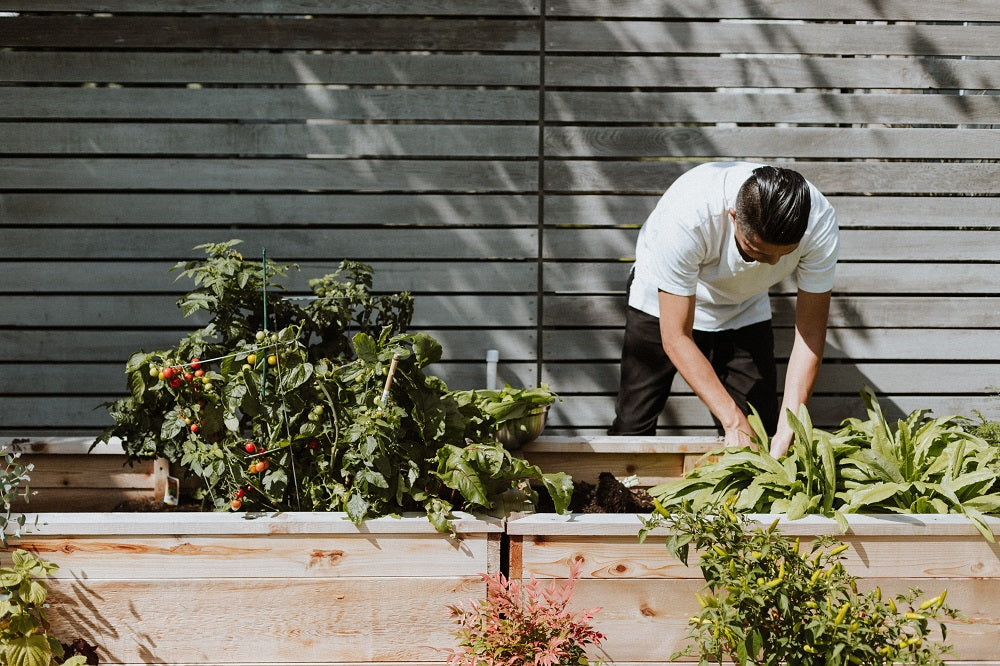News
This is Why Your Plants Need Pruning

Reading time: 3 mins
Key points:
- Pruning has multiple benefits for both outdoor and indoor plants
- Find out which of your plants need pruning
- Learn the simple way to prune Click and Grow plants
While we’re all about the love of indoor gardening here at Click and Grow, we appreciate that a large part of our community also enjoys growing outdoor plants. With that in mind, we thought we’d put together a quick beginner’s guide on a key part of gardening: pruning your plants!

What is pruning?
Pruning is when you selectively remove branches from a tree or stems from a plant. You can prune almost any type of plant to encourage growth and prevent diseases. Let's take a look at why pruning is so important:
Regular pruning promotes healthy growth
When you prune your plants, you’re actually cutting off the old growth and encouraging the new. Pruning will influence growth and gardeners use these physiological reactions to shape the canopy and to stimulate flower and fruit formation.
Pruning is done to keep the plants healthy by removing dead, sickly, or damaged parts of plants. Here's how:
- By cutting off some of the oldest branches, you allow more energy to be directed toward growing new ones instead of maintaining old ones. This also allows light to reach lower parts of the plant that otherwise wouldn't get enough sunlight. With better exposure, these lower regions will produce more flowers and, therefore, more fruit clusters.
- Water evaporation is one of the most important and efficient ways for a plant to lose heat. With frequent hot weather, it’s an important way for plants to deal with temperature stress. Keep in mind, though, that trees lose even more water when they’re covered in layers of leaves. By trimming the foliage you can help prevent water evaporation from the leaves (and less moisture will be lost.)
- Regular pruning of weak branches and damaged wood helps to increase air circulation and light availability around the base of a tree or shrub. Plants don’t gain anything from the dead or damaged parts and they should be removed. More so, damaged and dead parts are the most likely spots for disease to spread. That could be deadly for the entire plant.
- Pruning also reduces competition among trees for nutrients available in soil--such as nitrogen--which means less work for your soil's microorganisms as well as fewer weeds growing around your trees because they aren't getting enough food!

Pruning helps plants recover from damage
Pruning is a great way to help your plants recover from damage. If you have a plant that's been damaged by disease, pests, or bad weather, pruning can help it recover.
- Prune plants that are diseased or infested with pests so the problem doesn't spread to other parts of your garden.
- Prevent further damage by removing broken branches after storms have passed through your area (or in areas where severe weather is common).
Pruning will make your garden more beautiful
Pruning is a great way to elevate the appearance of your garden. When you prune, you're able to remove dead or diseased branches and leaves, which can help make your plant healthier and more attractive.
For example, if a branch has died because it was exposed to too much sunlight, then removing that branch will allow light into other parts of the plant - and those areas might be able to grow new leaves!
You can also use pruning as an opportunity for creativity: maybe you want to trim some bushes into interesting shapes or create spaces between plants where insects like bees can fly through freely (this helps pollination).

Which kinds of plants need pruning?
- Pruning is particularly necessary for plants such as herbs, vegetables and shrubs.
- Trees and flowers also require pruning to ensure they grow well and remain healthy.
In addition to these plants that need pruning there are several fruit trees which benefit from regular trimming including: apples, pears, cherries and plums.
What about pruning Click and Grow plants?
When it comes to plants that are growing in your Click and Grow smart garden, herbs are the ones that will require most pruning. Here’s a visual guide on how to do that, using basil as an example:
For a more precise trim, we highly recommend using Click and Grow herb shears (available here).
Conclusion
Pruning is a great way to keep your plants healthy, and if you have the right tools it can be easy! We hope this guide has given you some ideas on why it’s important to prune your outdoor plants as well as your Click and Grow plants. If you have any gardening related questions, head over to our ‘Ask a gardener’ forum where one of our expert horticulturalists will be able to give you some helpful tips and tricks.
